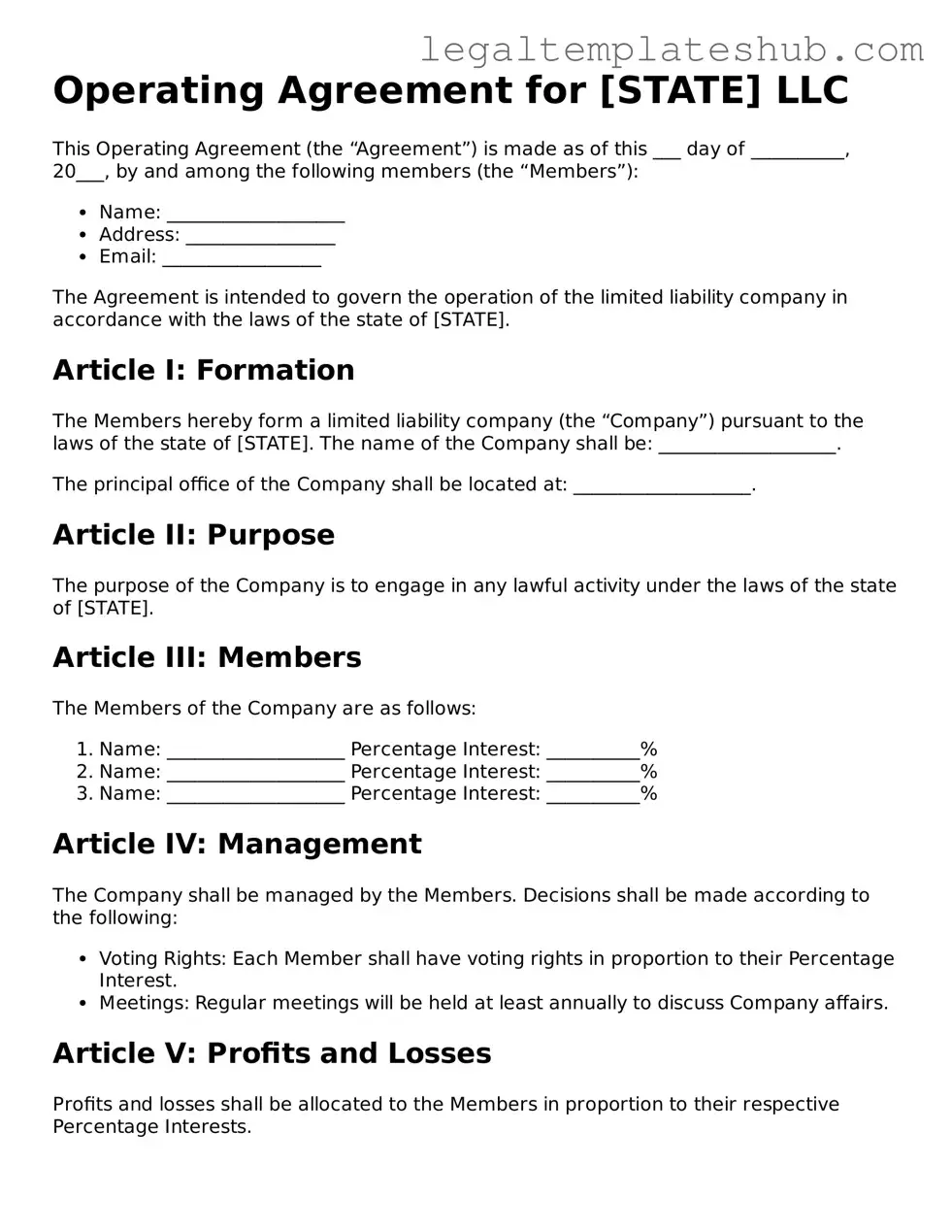Printable Operating Agreement Template
An Operating Agreement is a crucial document that outlines the management structure and operating procedures of a limited liability company (LLC). This agreement serves as a roadmap for the business, detailing the roles of members, decision-making processes, and profit distribution. Understanding how to properly fill out this form is essential for any LLC to ensure smooth operations and legal compliance.
Ready to get started? Fill out the form by clicking the button below.
Access Editor
